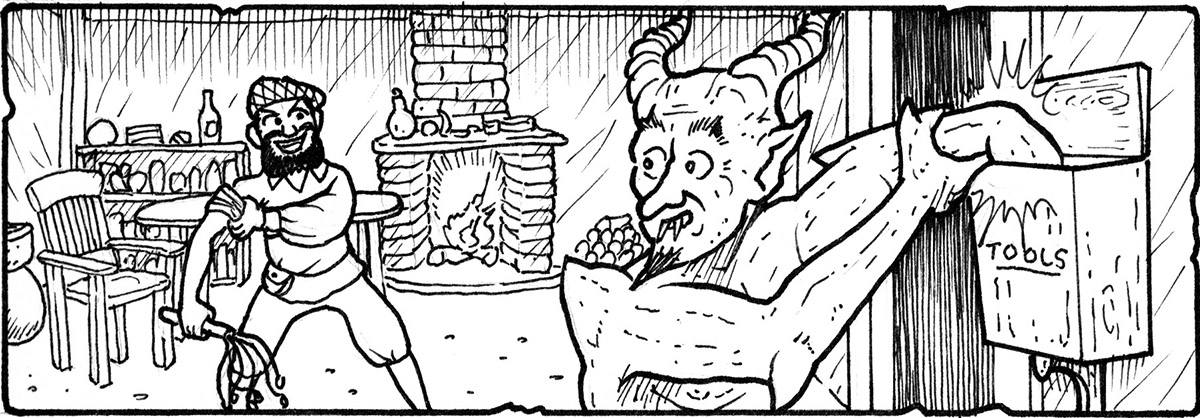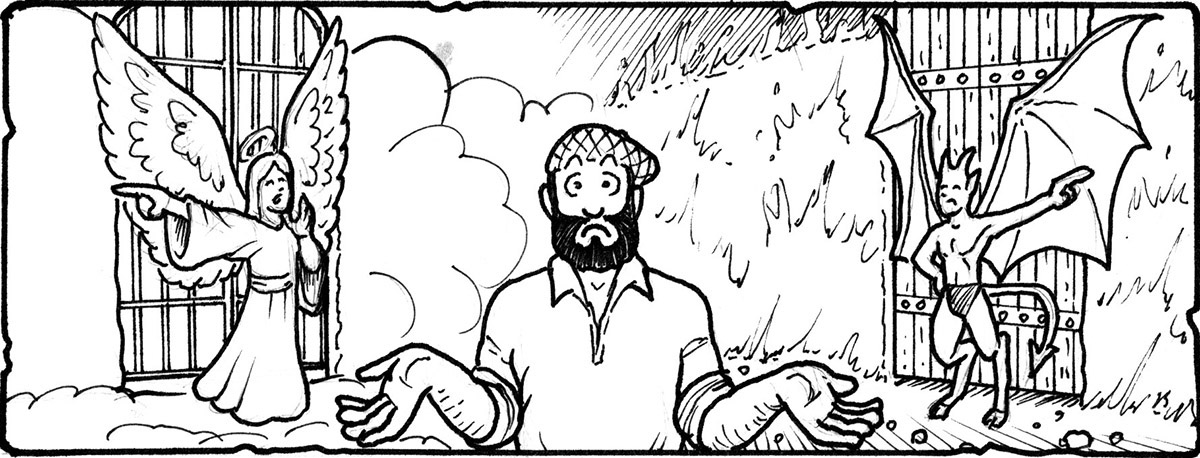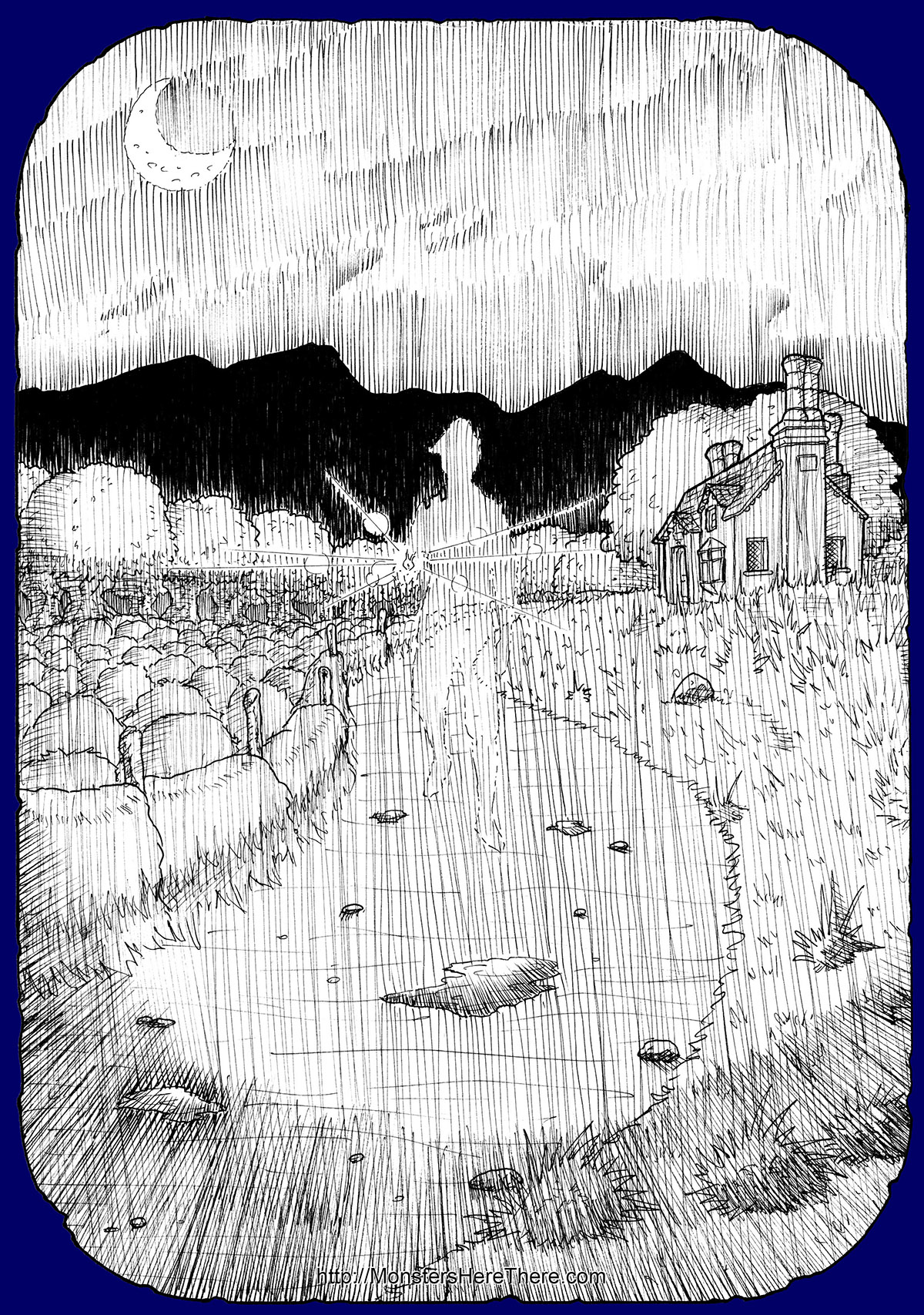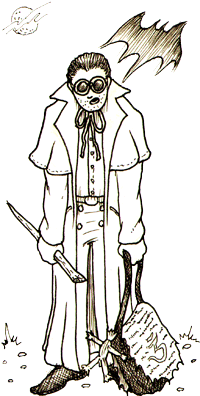| Area(s) Reported: Europe: Ireland
Date(s) Reported: Timeless
(a.k.a. “ Will O’ the Wisp”) In many parts of the world, people tell of strange flames that move through the night air as if guided by a playful — or malevolent — intelligence. Generally called Ignis Fatuus (“foolish fire”) by those that study them, these “flames” range in size from a candle-flame to a two-fist sized ball, and float or fly around four to six feet above the ground. Though they appear to be either glowing balls or a floating fire, and put off a good light, they don’t ignite objects they touch or have any noticeable heat. Ignis Fatuus have been known to both follow people or to float along in front of them, lighting their path. Sometimes the flames float perfectly still, only to instantly fly off in an unexpected direction; sometimes they disappear completely, only to reform a moment later in a different spot. They are often accused of trying to trick nighttime travelers off their course, sometimes into dangerous swamps or bogs, or over cliff ledges... but these lights have also been said to help travelers who are lost find the correct path, or to regularly light the way home for people they befriend. In Ireland, it was told that the best way to chase off or avoid the attentions of these floating fires was to put your clothes on inside-out! Although tales of the Ignis Fatuus are often fantastic and questionable, enough credible reports of encounters and sightings have been made to prove the flames exist. Many theories have been put forward by scientists to try to explain these strange lights, but there has not yet been a definitive scientific answer. There are, however, many non-scientific theories about what the lights are. In many European countries, for example, tales have long been told of the ghost of a wicked man whose spirit is doomed to wander the Earth until the end of time, invisible except for a flame that forever lights his way. Cruel, but Clever This wicked man is named William in some tales and Jack in many more; and stories about him have come from Germany, Switzerland, and Ireland, among other places. These tales express the common belief in Biblical religions that there are only two fates for people when they die; either you’ve lived a good life, and go to Heaven to be rewarded, or you’ve lived an evil life, and go to Hell to be punished. Jack lived an evil life. He was a mean and unsociable man, who had never trusted or helped another person in his life; and yet, one day, he felt an uncommon pity for an old man lying on the side of the road, and took him home to feed and heal him. Jack was surprised to find that the old man was actually an Angel ― a divine messenger ― sent from Heaven to test him. For proving that there was indeed a kernel of goodness somewhere deep inside, Jack was offered three wishes as a reward. But Jack was too mean-hearted to use the wishes wisely. His first wish was that anyone sitting in his favorite chair should be trapped there; his second wish was anyone touching his tools should be trapped as well; and his third wish was to trap anyone trying to take a branch from his tree. Though the wishes were granted, the Angel was disappointed with Jack’s continuing distrust for others. 
Years later, the Devil, ruler of Hell and all things evil, sent two of his minions to inform Jack that it was his time to die. Jack didn’t want to go, so he tricked the first minion into sitting in his chair, where it was trapped by the magic of the wishes. Jack then used a flail to beat the poor creature until it agreed to return to Hell without him. When the second minion showed up, it was tricked into touching Jack’s enchanted tools, and then given the same treatment as Jack’s first visitor. Big Trouble Angry as could be, the Devil himself came for Jack. The evil one refused to set foot inside Jack’s house, thus avoiding the tricks that trapped his minions... but he was tricked into grabbing a branch of Jack’s tree, and couldn’t escape. Jack beat the Devil with his flail until the ruler of all things evil promised to never take Jack’s spirit to Hell; only then did Jack release him. Jack lived the rest of his life just as wickedly as he pleased, knowing he would never be sent to Hell to be punished. But when he finally died, he found he’d been too evil in life to be allowed into Heaven with all the good people; and the Devil had sworn to never take him into Hell... so Jack’s spirit had nowhere it could go! His lonely ghost was doomed to wander the Earth until the world came to an end. 
Perhaps out of respect, the Devil gave Jack an ember from the fires of Hell that would never burn out, which Jack could use to light his lonely path... and it is the flame of this lantern that is reportedly seen by those who encounter his spirit. Folklore or Fact? Because of the legends of Jack and William, in many countries of the world the Ignis Fatuus became known as either “Jack o’ lantern,” which is short for “Jack of the lantern,” or “ Will o’ the wisp” after the name William... and these fires were often addressed by people directly as either Jack or William when they were encountered. According to the legends in Ireland in particular, Jack’s lantern was carved from a turnip he had in his pocket when the Devil threw him the burning ember. Because of this, it was customary in Ireland to carve lanterns from turnips for the Samhain holiday, which was thought to be a time when the dead returned to the earth in ghostly form. This tradition later came to the United States with Irish immigrants, who started to use pumpkins instead of turnips for the holiday (now called Halloween) because they are bigger, and easier to hollow out and carve. Of course, the carved pumpkins still carry the same name as the traditional turnip lanterns; named after “Jack of the Lantern”... Jack O’ Lanterns. 
See also: Angels, The Devil & his Demons | |












